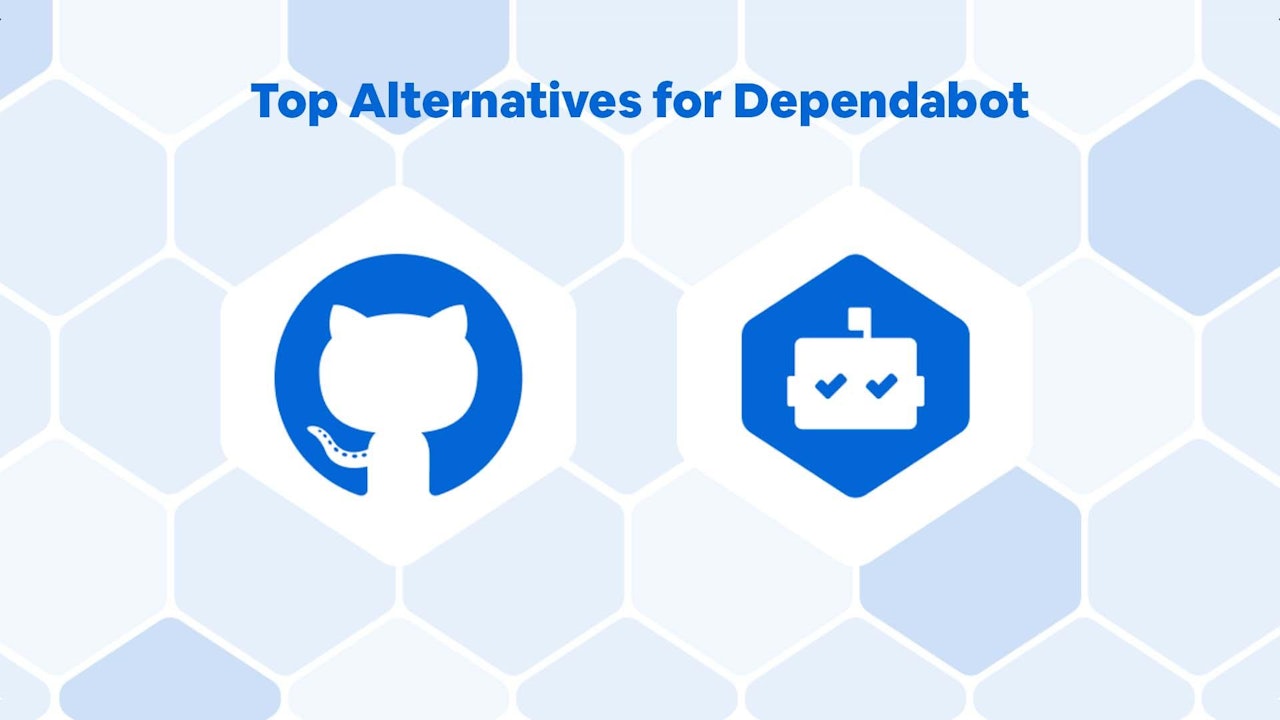Software development is an unending chain of activities that doesn't terminate when the product is deployed. It keeps the development team constantly tinkering with deployed code. GitHub's Dependabot is a solution that aims to reduce the amount of time development teams have to spend on updating critical tools and dependencies that applications leverage over the course of their lifecycle.
When it comes to managing something as critical as your software supply chain, you want to ensure you're using the best solution possible. While Dependabot is the best-known solution for dependency management, understanding the pros and cons of the alternatives enables you to choose your best option.
For example, if your tech stack isn't supported by Dependabot, you want to use a solution on a platform that's not GitHub, or you want features like grouping, scheduling, or auto-merging updates, Dependabot may not be the optimal tool for you.In this article, you'll be learning about alternative tools you and your team can use in place of Dependabot.
Top Six Alternatives to Dependabot
-
Renovate
Renovate is an open-source, world-class dependency updating tool that is also endorsed by Google and the Open Source Security Foundation (OpenSSF) as being the standard when it comes to dependency updates. Mend Renovate supports major solutions like Docker and Kubernetes, among others, in terms of programming language and framework support. It also caters to .Net, Python, C#, C++, Ruby, Javascript, Java, PHP, NodeJS, and others.
When merging new dependency updates into your build, one of the main concerns is that you might break your build. Renovate offers a unique solution to this problem. Crowdsourced tests and package adoption data are packed into a single Merge Confidence score which is available in every pull request to help identify whether an update can be safely merged or is at risk of breaking your build.
In addition, Renovate allows you to set up auto-merging for updates that pass your tests and defined rules (including custom rules). As well as being extremely configurable, Renovate comes with default settings for easy use right out of the box. Lastly, with over 600 open source contributors, 8,600 GitHub stars, and 500M Docker pulls, Renovate has a strong user community you can rely on.
Additional major benefits of Renovate are the fact that it can be self-hosted (helps with scaling across different platforms), includes release notes and commit history in each PR to showcase what changed with each update. Renovate also enables scheduling and grouping of updates so you can be efficient and undistracted.
-
Autofac
 View Website
View Website
 View Website
View Website
 View Website
View Website
Autofac is a dependency update tool that works exclusively with Microsoft tools while leveraging dependency injection (through inversion of control) to solve dependency challenges within your application. Autofac is really simple to use and lightweight. Moreover, it can be installed as a NuGet package into your application to make it easier for you to leverage its functionalities.
Autofac isn't as robust as other dependency update solutions. However, it is able to pull its own weight by helping with the registration of components. Autofac is able to help build containers using lambdas while respecting the strictly typed nature of your programming language and framework.
With regards to making work easier, Autofac helps with the injection of constructor parameters. It makes dependency injection much easier and faster as it handles property and method injection too. In terms of simple, fast, and lightweight, Autofac ticks all the right boxes that concern your company.
-
Violinist
Violinist is an open-source PHP-driven dependency update solution. Violinist is used by popular organizations like Unity. Violinist is also able to integrate well with other tools like Drupal, GitHub, and Packagist.
With regards to language and framework support, Violinist works largely with PHP, NodeJS, and deployment solutions like Docker, which ensures that your team is managing PHP and/or NodeJS-built applications from inception to deployment, making things easier.
Violinist is able to check your code for package updates. When on a version control platform like GitHub, Violinist is able to create commits (accompanied by the respective commit message), and merge requests. This gives you and your team oversight into what is allowed to be added to your codebase and what isn't.
Violinist can be incredibly useful if you want to be able to control your dependency update because it merges into your codebase with your pull request but provides information about the packages that will be updated via the pull request.
-
GuardRails
GuardRails is a robust dependency update solution that integrates with version control platforms like GitLab, GitHub, and Bitbucket. It supports languages like JavaScript, Java, Python, PHP, Go, Ruby, and C++. GuardRails promises easy integration, continuous scanning, and lines of actions to take in the event of a dependency update challenge.
GuardRails is especially useful because of its GUI (graphical user interface), which allows GuardRails-suggested solutions to be implemented thanks to the presence of proper guidance and efficient documentation.
GuardRails works towards finding and fixing problems with open source dependencies, containers, and infrastructure. All of this means that your development team has less responsibilities that they have to recurrently partake in. This saves time and gets more work done.
GuardRails can be set up without hassle and is easily customizable. It is accompanied by fast version control integration, which saves you time in the process of onboarding your application regardless of whether you're working with a new repository or an old one.
-
Fossa
Fossa is an open-source dependency update tool used by notable organizations such as Slack, Twitter, Snapchat, Uber, and others. Fossa boasts of a dependency update system that is capable of managing any enterprise application regardless of whether it's monolithic or otherwise. Fossa, in addition to dependency update monitoring, assists development teams with license compliance during development.
Fossa integrates well with a host of standard software development tools such as Docker, Jenkins, GitHub, GitLab, Slack, BitBucket, among others. Also, Fossa supports programming languages and programming-related tools like JavaScript, NPM, .Net, Java, IOS, PHP, Go, Python, Ruby, Rust, Scala, and Perl.
One unique feature about Fossa is its software bill of management (SBOM), which helps companies keep track of all the external dependencies the software solution interacts with as well as their nature (open source or proprietary), and the supply chain relationship that a company's software solution has with these resources. This list can be incredibly insightful when auditing software solutions and their inherent risks.
-
Tidelift
Tidelift is an open-source tool that is used by established outfits such as Bloomberg, and Adobe, among others. It helps improve critical decision choices during the development and maintenance of an application over its lifecycle. Fossa is able to do this by providing a dashboard where SBOMs are monitored along with some data analytics of each dependency your company's application interacts with.
Tidelift can also be used for managing development best practices within your company as it enables enforcement of declared coding standards and policies within the application development process. This helps you avoid integrating potentially dangerous dependencies.
A notable feature of Tidelift is its pre-vetted dependency repository that development teams can easily choose when deciding to call third-party solutions. Tidelift can be integrated into your application through CLI (command line interface) and CI/CD pipeline integrations, which helps you leverage tools like Azure DevOps, BitBucket, GitHub, Gitlab, Jenkins, and CircleCI to speed up your development and deployment.
Conclusion
In this article, you learned about alternatives to Dependabot and what makes each alternative a viable solution to your company's challenges. You also learned about Dependabot alternatives that exist for programming languages and frameworks that Dependabot currently doesn't cater to.
Exploring alternatives to Dependabot is a pragmatic way of ensuring you're not boxed in when it comes to automating critical processes of your software development lifecycle. Regardless of whether you make the switch to one of the solutions you learned about today, you should know what alternatives are out there. Being overly reliant on a solution can leave you unprepared for a situation where a change in the terms of use of a tool leaves you in a pickle.


Comments (0)